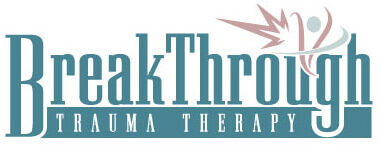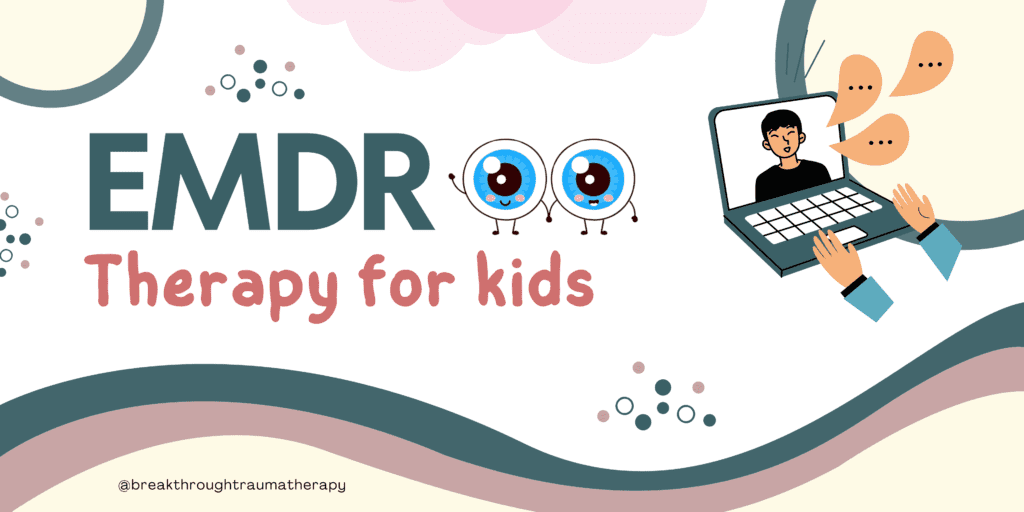Eye movement desensitization and reprocessing (EMDR) has garnered much popularity in recent years over its efficiency in treating anxiety and trauma-related mental conditions. However, while the bulk of the evidence shows EMDR’s efficacy in treating trauma in adults, many wonder if this treatment is as effective for children and adolescents with mood disorders. Just how effective is EMDR in treating trauma in young people? The answer to this question lies
in how EMDR works.
How EMDR Works
Bilateral Stimulation

In EMDR therapy, the therapist employs bilateral stimulation, the use of sensory inputs alternating to the right and left of the body, to activate the brain and facilitate the processing of traumatic memories. The techniques used include:
● Eye movements, where the therapist moves an object or finger from left to right.
● Sounds, tones, or beats played alternatingly between both ears in a sequential rhythm
● Tactile stimulation involving tapping alternative shoulders or knees
Target Identification
While the therapist performs bilateral stimulation, the patient focuses on a specific distressing memory, thought, or emotion. Both techniques activate parts of the brain responsible for processing thoughts and emotions, enabling effective reprocessing that promotes adaptive coping.
Cognitive Reframing
EMDR primes the brain to be more receptive to cognitive restructuring. During a traumatic event, certain brain regions may malfunction in processing the ordeal.
The amygdala, the brain’s stress response center, becomes overstimulated and hypersensitive to stressors related to the traumatic experience. Sometimes, it may pick up on phantom sensations and interpret them as a threat, activating the stress response, commonly known as anxiety. For a child, this manifests as hypervigilance, oversensitivity to stress, and perpetual anxiety.
The hippocampus, responsible for forming, storing, and retrieving memories and consolidating short-form memories into long-form memories, also glitches during a traumatic event. The faulty memory created lacks ‘the proper context’ because of the distortion in the captured details – the associated emotions, sensations, and sequential occurrence of the ordeal.
Each time stressors, real or imagined, activate the amygdala, it stimulates the hippocampus to retrieve these faulty memories, which manifest as intrusive thoughts and memories, nightmares, and vivid dreams. The manifestation appears surreal, making it impossible to differentiate between reality and trauma recollection.
Trauma also impacts the prefrontal cortex, reducing its ability to rationalize and process emotions associated with the traumatic memory and decision-making. Small triggers or unrelated stimulation of the amygdala make the child overactive and severely affected.
EMDR reframes the pathways associated with memory processing, enabling the child to reprocess and consolidate those faulty thoughts, emotions, and memories. It also conditions them to be more receptive to adaptive coping techniques.
How Trauma Affects Children
The brain does not fully develop until a person is well in their mid-to-late twenties. Trauma interferes with a child’s developing brain, increasing their vulnerability to mood disorders, substance abuse, and maladaptive behavior. Without early intervention, the impact of childhood traumatic experiences can persist into adulthood.
Effects of Trauma on Children
High Risk of Developing Mood Disorders

Children exposed to adverse childhood experiences have a higher risk of developing mood disorders, from severe anxiety to major depression. The vulnerability stems from mood, emotion, and thought dysregulation emanating from the traumatic event. The outcome worsens if the child has conscious memories of the traumatic event.
Low Self Worth
Childhood experiences impact a person's sense of value into adulthood. A child who has experienced neglect, violence, or rejection grows up believing they are not good enough. They may work around their feelings of insufficiency by always working to please people to gain acceptance.
Strain in Relationships
Trauma can impact a child’s ability to develop healthy attachments and relationships. It yields fear, hate, jealousy, and shame, leading to obsessions or avoidance. Each extreme outcome depends on the child’s coping mechanism.
Maladaptive Behavior
Living with the effects of trauma can push children into delinquency to numb the pain or as a desperate attempt for attention. The child can turn into a bully or become withdrawn, use substances, use food for comfort, turn to promiscuous behavior, or live life on the edge. All these behaviors have one thing in common. They activate the reward pathway, which inhibits the stress response and its effects.
The reward pathway also evokes feelings of pleasantness, providing temporary relief from the hell unleashed by the trauma. It motivates the person to seek more pleasurable activities to avoid, suppress, or forget the traumatic experience. Unfortunately, this behavior-induced activation leads to addiction and tolerance that is destructive to the person's physical and mental health.
Increased Risk of Sickness
Trauma keeps the body in a perpetual state of fight or flight. The physiological response includes high blood pressure, increased heartbeat and breathing rates, nausea, diarrhea, stomach-acid dysregulation, appetite suppression or enhancement, and heightened muscular activity.
Prolonged periods of anxiety eventually cause cardiovascular conditions such as hypertension and irregular heartbeats. The digestive system also experiences the effects, making the child vulnerable to hyperacidity, chronic irritable bowel syndrome, and weight and nutrition-related issues.
Why EMDR Therapy is An Effective Treatment For Children

EMDR is an effective treatment for trauma in children, helping them to reprocess traumatic memories, thoughts, and emotions before they can interfere with their brains, causing further damage. The therapy is straightforward, requiring a few sessions to produce results. A therapist guides the process, helping the child focus on a distressing memory, thought, emotion, or sensation before performing bilateral stimulation to guide in reprocessing and consolidating the memory.
The therapy typically takes 6 to 12 sessions, with most patients experiencing relief before completing a treatment cycle. The therapy does not require medication or any form of electronic or magnetic stimulation. Bilateral stimulation is enough to activate the reprocessing and memory consolidation. Most importantly, the child does not need to fully understand the extent of the trauma to heal as in cognitive-behavioral therapy (CBT).
For effective results, work with a qualified therapist with expertise in EMDR. Analyze their qualifications and treatment outcome before subjecting your child to therapy. Seek help today and empower your child to become resilient from past and future adversity.
Contact Us
